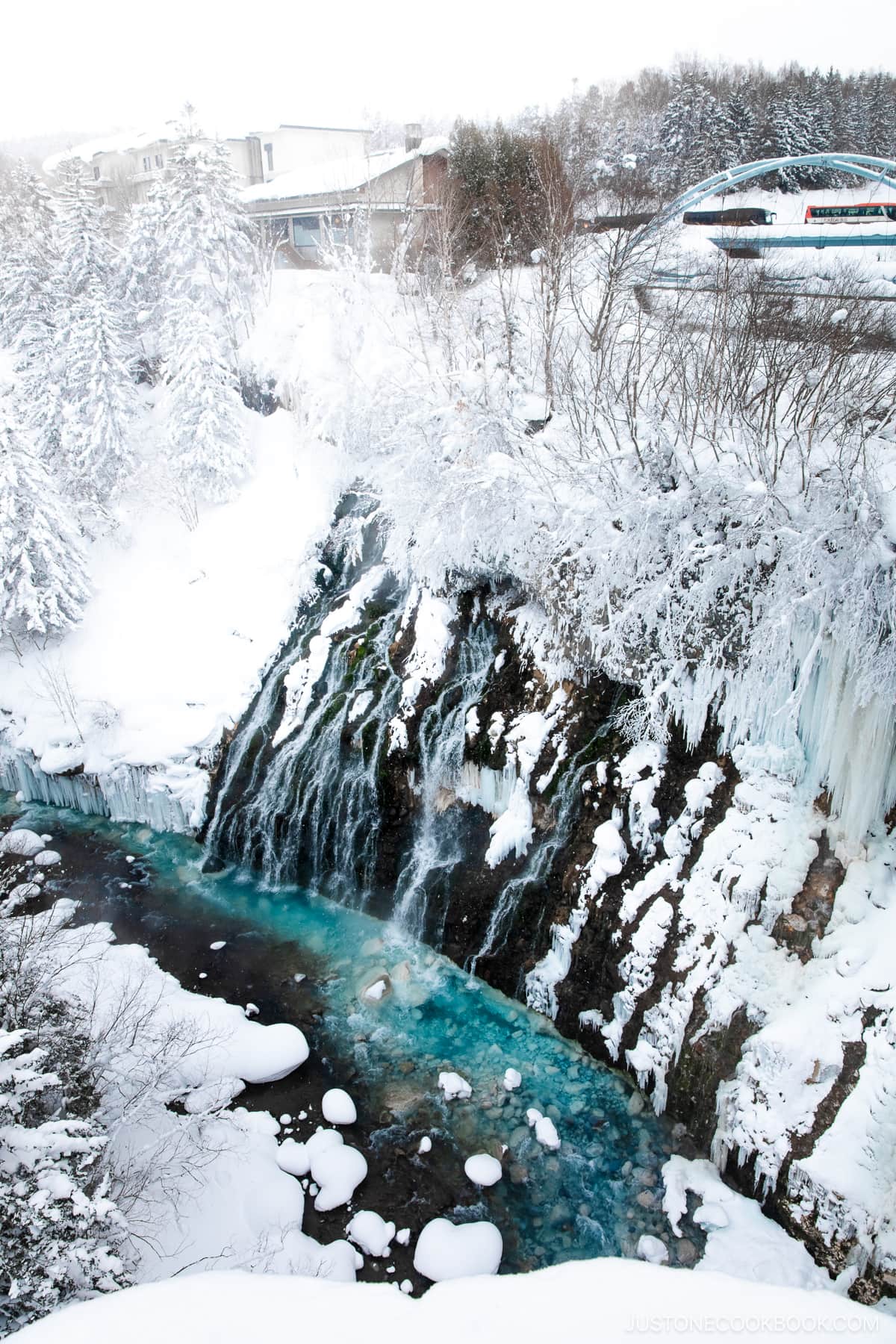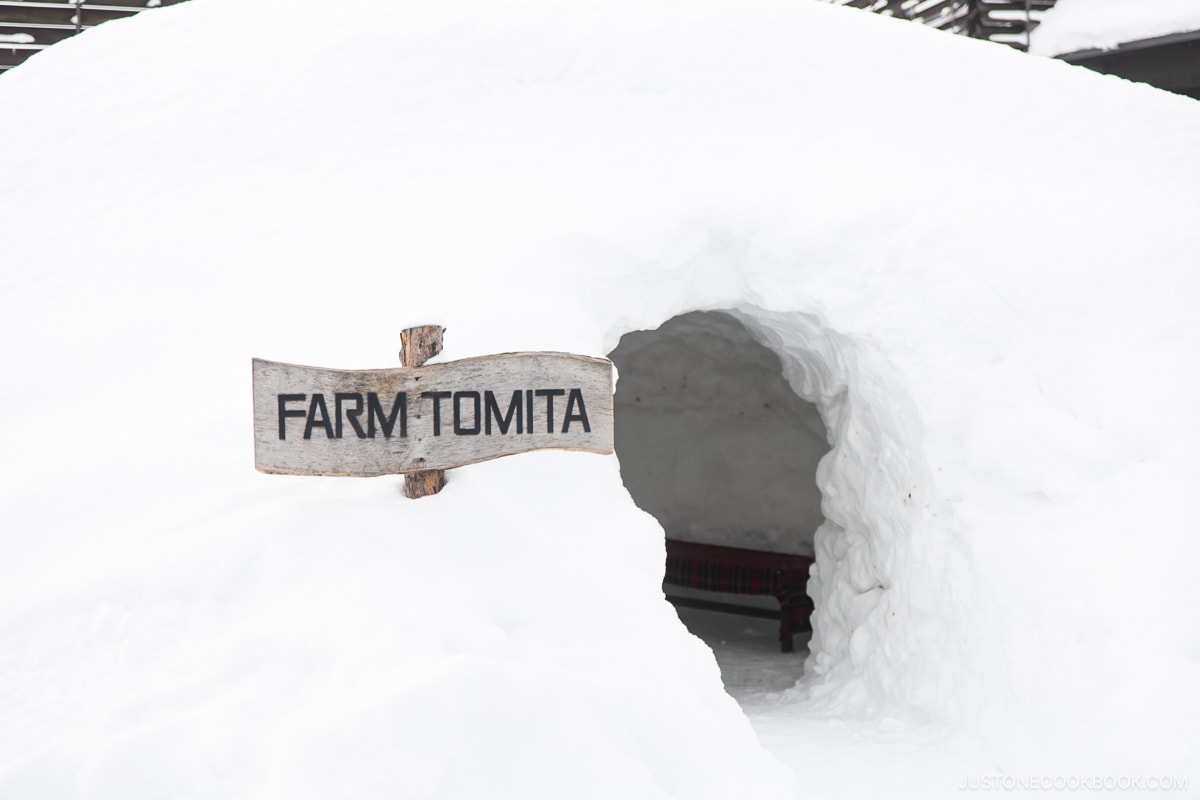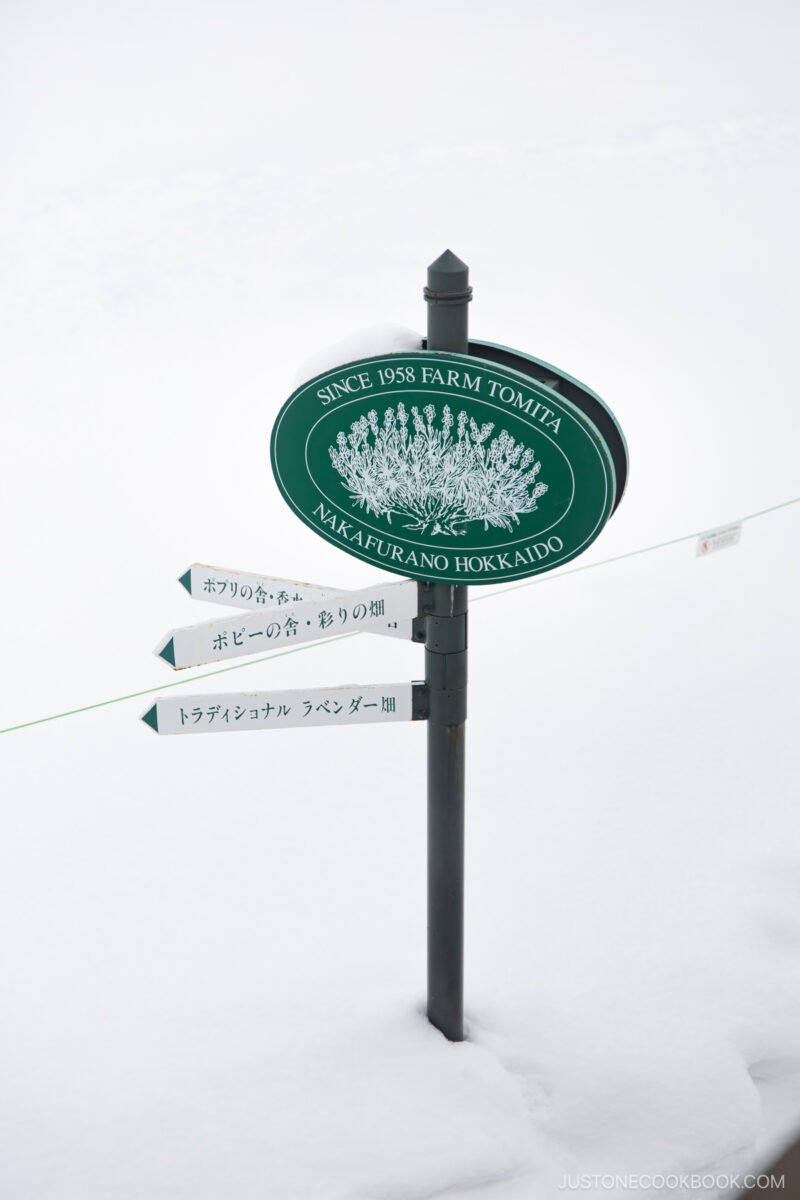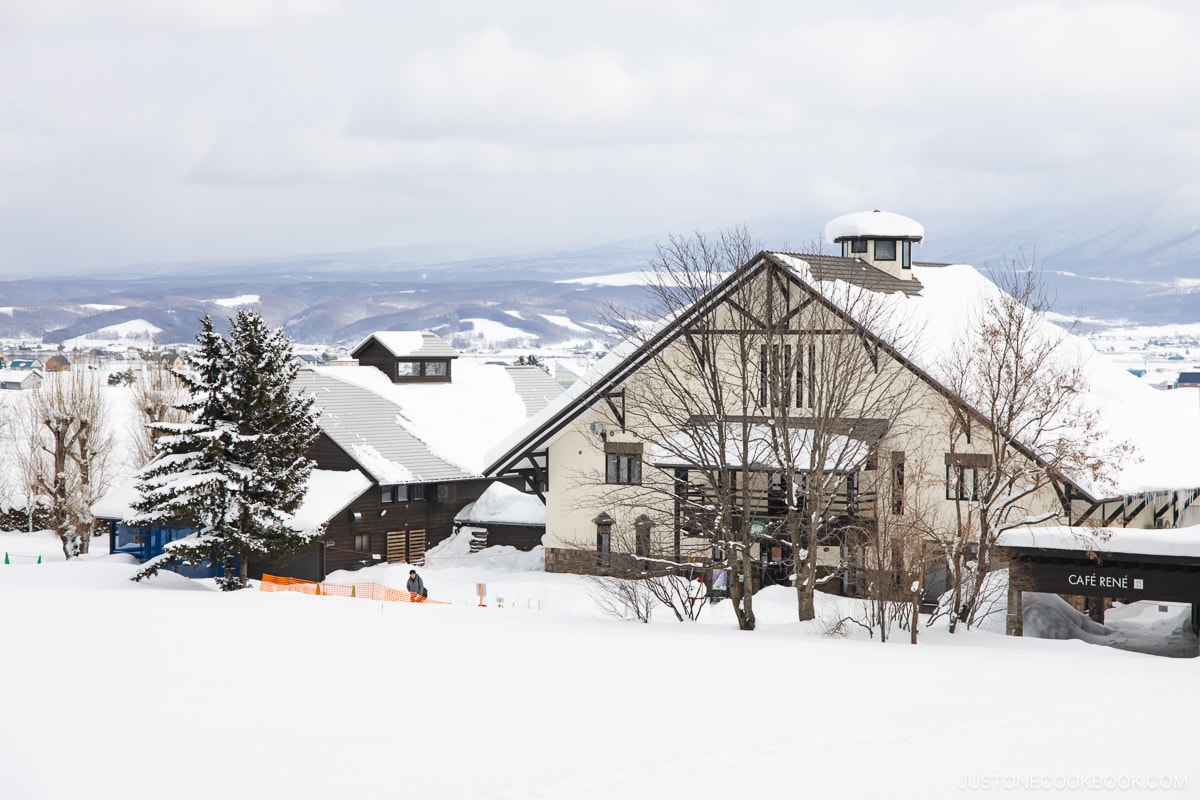From snowy landscapes to hot spring baths, this Furano and Biei Winter Travel Guide has everything you need to plan your perfect winter getaway.

Furano, famed for its luscious lavender fields and seasonal flowers, is also a haven for all kinds of winter sports, activities, and scenery. From skiing and snowboarding to dog sleds and frozen waterfalls, there is something everyone can do to enjoy Hokkaido’s winter.

I’ll be visiting many of the places that appeared in the summer Furano Travel Guide and showing you what it is like during the peak winter season.
So, let’s get into the action!
Table of Contents
How to Get to Furano
Furano, located in central Hokkaido, can be accessed from Sapporo by train or bus. By train, take the Lilac-Kamui Limited Express from Sapporo Station to Takikawa Station and then change to the Nemuro Line to Furano Station. The whole journey takes approximately two hours and 20 minutes, costing 4,540 yen ($30 USD) one way (in 2024).
Alternatively, take the Hokkaido Chuo Bus from the Chuo Bus Terminal to Furano. This takes approximately 3 hours and costs 2,700 yen ($18 USD) one way.
However, from Furano Station, getting to some of the places I will mention is difficult, so it may be worth renting a car once arriving. In winter, the windy, narrow roads around Furano and towards Biei are very dangerous, and the weather can turn against you, which I will get into later on.
If you plan to drive from Sapporo, it will take approximately two hours and 1,300 yen ($9 USD) in tolls (in 2024). The highway takes you to Mikasa, and the roads can be slippery from there, so please be careful. From Furano, it will take another 40 minutes to Biei.
Winter Activities
Furano Ski Resort is one of central Hokkaido’s most popular ski areas alongside Tomamu. The resort is split into two areas: Kitanomine zone (open mid-December – late March) and Furano zone (open late-November – early May). There are 28 different trails to choose from. Furano’s central location means that Siberian storms that pass over the Sea of Japan end up dumping some of the lightest and driest snow in Hokkaido. The average annual snowfall is around 7 meters, with the highest in January and February.

20% of the trails are rated advanced, 40% intermediate, and 40% beginner, making the resort accessible to all skiers and snowboarders. The slopes are also open until 8 pm, so you can also enjoy some night skiing. You can reach the summit by taking the 101-passenger Furano Ropeway. As you ski down, you’ll see the picturesque Daisetsu Mountain Range. At the bottom are two large ski-in ski-out Prince Hotels, making it the perfect winter destination.

What’s great about skiing and snowboarding in Furano is that you can enjoy all the powder snow, spacious slopes, and amazing views without the crowds of other resorts such as Niseko! There is also English support for ski lessons, hotel services, and overall facilities.

Away from Furano Ski Resort, you can enjoy other smaller ski slopes, such as Nakafurano Hokusei Ski Area.
Aside from skiing and snowboarding, there are plenty of other winter activities. From snowshoeing and snow rafting to riding a hot air balloon, there is so much to offer. Unfortunately, when I visited, the weather wasn’t great, so I wasn’t able to partake in any. You can check out the list of activities here.
Furano Cheese Factory
Furano is known for its agriculture and dairy production, which you can enjoy at Furano Cheese Factory. Here, you can get a glimpse into the cheese production while enjoying cheese samples, including flavorings such as squid ink.






You can also learn about cheese and take part in ice cream and butter-making experiences.

You can also pick up some ice cream with some unique flavors, such as cheese and pumpkin!


Downstairs, there’s a small pizza restaurant using local vegetables and house-made cheese.
Farm Tomita
During the summer, Farm Tomita is the best place to see Furano’s famous lavender fields. Surrounded by a sea of purple, the farm attracts people from across the globe. However, in winter, it’s a different story. Instead, a blanket of white snow envelopes the fields with little trace of its summer counterpart. Not to mention that all of the shops were closed!






Nevertheless, the scenery is still beautiful, and it is nice to take a walk around!
Aoi-Ike (Blue Pond)
Just outside of Shirogane Onsen is Aok-Ike or Blue Pond. It is known for its bright blue water, created from all the natural minerals dissolved in the water. I have been before in summer, and the blue color is worth seeing, but apart from that, there is little else to do or see.
In winter, the lake was frozen and covered in snow, so you can’t see the blue color! I don’t think it’s worth going in winter, but if you have the chance to go in spring, summer, or autumn, I recommend visiting.


Shirahige Waterfall
Just a five-minute drive from Aoi-Ike is Shirahige Waterfall, which was most definitely the highlight of my time in Furano. The waterfall is formed by a series of ground streams flowing out the side of a cliff and into the Biei River below.

To the left, you will see the Biei River flowing into the distance.

To the right, you’ll see Shirahige Waterfall frozen over. Its name, Shirahige, actually translates to white beard!




While the waterfall is beautiful in summer with the surrounding greenery, in winter, the view of the ice formations and contrast with the cobalt blue river is a must-visit.
Shikisai No Oka
If you’ve read our summer Furano Travel Guide, you’ll remember Shikisai No Oka as having rows of colorful flowers meandering through the rolling hills. In winter, the area, much like the rest of Furano, is covered in snow and becomes a playground for winter activities. Kids can enjoy the sleds that can be rented from the entrance building, while adults can ride snowmobiles or banana boats.


Now it’s time for my driving “accident.” You can probably see from the pictures that the weather started to take a turn for the worse. Visibility was poor, and while leaving Shikisai No Oka, I followed the car navigation, which led me down a narrow and unassuming road. With poor visibility and complete trust in the car navigation guidance, I made my way down the road. At first, my car powered through, but the snow got deeper and deeper until I was eventually stuck.

I tried to dig my way out for at least half an hour but to no avail. Luckily, it wasn’t too far from Shikisai No Oka, so the staff helped pull me out. They told me that many roads around the area are like this, so you have to be careful. Other areas are much more deserted and might not have anyone to help. You can call JAF (Japan Automobile Federation) or the car rental, but in severe conditions, it may take a while for them to reach you.
So please drive with caution and be prepared for a situation like mine!
Lone Christmas Tree
With little daylight left, I made my way to the Lone Christmas Tree, an 8-meter spruce tree with its tip supposedly shaped like a star. The tree is surrounded by nothing but snow, creating a scenery that looks like a painting.

The area around the tree is private property, so you are not allowed to walk up close. The surrounding roads are also narrow, and you’ll probably find many people trying to take photos. If you are driving, please proceed with caution.

Ningle Terrace
During the evening, there’s not too much to do apart from night skiing or visiting Ningle Terrace. Established with the neighboring New Furano Prince Hotel, the shopping area consists of 15 log cabins connected by a sequence of wooden walkways. These walkways are lined with fairy lights during the evening, creating a magical winter atmosphere.

The name comes from the novel Ningle by So Kuramoto, which features the appearance of a small creature called Ningle, who lives in a forest in Hokkaido.


The shops are filled with local artisans’ products and goods, making it the perfect spot to buy souvenirs!


Next to Ningle Terrace was a small illumination display with a paid entrance. After a long day and temperatures nearing 14°F (-10°C), it was time to go eat something warm!


After researching and looking around, many of the restaurants around Furano Station were closed. My only choice was one curry shop, Yuiga Dixon.

It’s a popular restaurant and the staff said there are often queues. I had to wait around 15 minutes to get a seat. I ended up choosing the beef tongue doria, which came out piping hot. The spicy curry, tender beef tongue and rich cheese was the perfect way to end the day!
Furano’s winter is a true wonderland, filled with fantastic scenery and many winter attractions and activities! Whether it’s sunny or snowing, like it was for me, there is always something to do! Just be careful while traveling around and enjoy Hokkaido’s winter scenery!











Who would ever guess that Japanese people eat cheese? And what does the corn ice cream taste like? I will have to forward this travel blog to my Japanese friends and ask if they have been here. Next time I visit Japan, I will have to go check this place out. Thank you for bringing awareness about this winter resort.